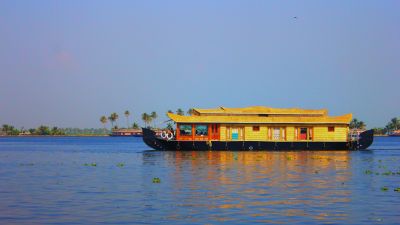Architecture Walks in Kerala: From Ancient to Modern
Architecture Walks in Kerala: From Ancient to Modern
Kerala is a land of stunning natural beauty, unique cultural traditions, and magnificent architecture. From ancient temples and palaces to modern marvels, this South Indian state is a treasure trove of architectural wonders. Exploring the architectural heritage of Kerala through walks is a fantastic way to delve into the history and culture of this enchanting land. In this blog post, we will take you on a journey from ancient to modern Kerala architecture, allowing you to witness the magnificent structures that grace this vibrant state.
Ancient Kerala Architecture
One of the most significant influences on Kerala's architecture is its rich history and diverse cultural heritage. The ancient architectural style of Kerala is known as the "Kerala school of architecture" and is characterized by its intricate wooden carvings, sloping roofs, and spectacular courtyards. The ancient temples of Kerala, like the Sree Padmanabhaswamy Temple in Thiruvananthapuram and the Guruvayurappan Temple in Guruvayur, showcase the exquisite craftsmanship and attention to detail that went into their construction.
Kerala's palaces are also renowned for their architectural splendor. The Mattancherry Palace in Kochi and the Padmanabhapuram Palace in Thuckalay are prime examples of this. With their unique blend of traditional Kerala architecture and European influences, these palaces offer a glimpse into the opulent lifestyles of the past rulers of Kerala.
Colonial Influences
The colonial era also left its mark on Kerala's architecture. During the Portuguese, Dutch, and British colonial rule, several buildings were constructed that combined European architectural styles with local elements. The most notable example of this is the iconic Fort Kochi area in Kochi. The area is dotted with stunning colonial-era buildings like the St. Francis Church and the Santa Cruz Basilica, which are fine examples of the Indo-European architectural fusion.
The architecture of the Jewish Synagogue in Mattancherry is another fascinating example of the influence of different cultures on Kerala's architectural landscape. Built-in 1568, it is the oldest synagogue in the Commonwealth of Nations and showcases a unique blend of Jewish and local architectural elements.
Traditional Kerala Homes
Traditional homes in Kerala, known as "Naalukettu," are another highlight of the state's architectural heritage. These homes are characterized by their central courtyard and sloping roofs with red clay tiles. They are typically made using traditional construction materials like wood and laterite stones. Exploring the backwaters of Kerala will give you the opportunity to witness the beauty of these traditional homes, as many of them are located in these serene settings.
Modern Architecture in Kerala
While Kerala's architectural charm lies in its ancient and colonial structures, the state also boasts some remarkable modern architectural wonders. The cityscape of Kochi is a testament to this, with its impressive skyline featuring contemporary marvels like the LuLu International Shopping Mall and the Kochi Metro. The Le Meridien Hotel in Kochi and the Bolgatty Palace in Bolgatty Island are also renowned for their modern architectural designs.
Another notable architectural gem in Kerala is the Indian Institute of Management (IIM) in Kozhikode. Designed by renowned architect C.N. Raghavendran, the campus seamlessly integrates traditional architectural elements with modern influences.
Conclusion
An architectural walk through Kerala is not just a visual treat but also a journey through the history and culture of this extraordinary land. From ancient temples and palaces to colonial-era buildings and modern marvels, Kerala's architectural heritage is diverse and awe-inspiring. So, lace-up your walking shoes and embark on a fascinating journey through time as you explore the captivating architecture of Kerala.
Share this blog post with your fellow travel enthusiasts and let them know about the architectural wonders of Kerala. Happy exploring!
Disclaimer : The information provided in this blog is for general informational purposes only. While we strive to keep the content accurate and updated, TravelSetu assumes no liability for errors or omissions. If you believe any part of this blog infringes your rights or causes concern, please notify us immediately at info[at]travelsetu[dot]com so that appropriate action can be taken.






















